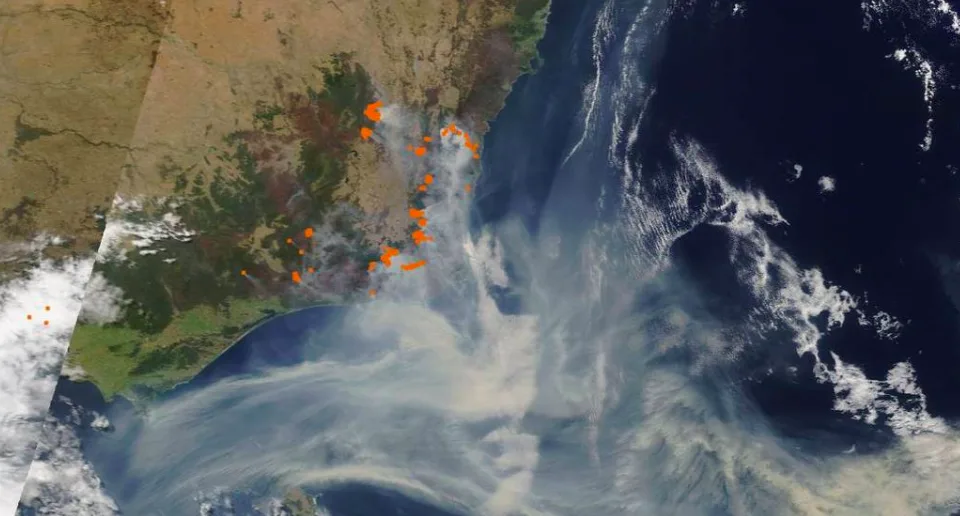
Plankton bloom larger than Australia caused by the country's 2019-2020 fires
Satellite data reveals that an enormous bloom of phytoplankton formed in the Southern Ocean after Australia’s historic bushfires that began in October 2019.
The Australian bushfires that raged during the 2019–2020 summer emitted a staggering amount of carbon dioxide into the atmosphere. Estimates suggest that approximately 715 million tonnes were released, which is roughly equivalent to the greenhouse gas emissions from 155,499,000 passenger vehicles driven in an entire year.
In addition to the warming effect these greenhouse gas emissions had on the planet, scientists say that the wildfires triggered the growth of a phytoplankton bloom larger than the size of Australia, which was of a magnitude that has never been seen during the 22 years of record-keeping for this part of the world. Interestingly, a study published in Nature says that these carbon-capturing organisms may have mopped up a considerable amount of the emissions that the bushfires released.

Smoke from the bushfires streaming off Australia’s southeastern coast over the Southern Pacific Ocean on January 31, 2020, with no rain clouds in sight. (NASA Terra satellite)
Wildfires release aerosols, which can transport micronutrients like iron and nitrogen thousands of kilometres away from the original wildfire. In this scenario, many of the macronutrients ended up in the Southern Ocean between South America and New Zealand and were consumed by phytoplankton, which boosted their growth and photosynthetic abilities. The scientists say that this ocean is relatively iron-limited and aerosol samples taken from the Australian wildfires were high in iron.
Phytoplankton absorb carbon dioxide and release oxygen during photosynthesis, and the study estimates that the phytoplankton bloom resulted in an uptake of roughly 95 per cent of the carbon that was emitted during the 2019–2020 wildfires. However, the study notes that there is considerable uncertainty with this estimate due to several unknown factors.
For example, the researchers have not determined how much of this captured carbon was transported to the deep ocean where it would stay for hundreds of years. If the carbon did not make its way to the depths of the sea, the researchers say it would only remain in the ocean for a much shorter length of time before cycling back into the atmosphere.

A phytoplankton bloom in the Great Barrier Reef, Queensland, Australia. (Posnov/ Moment/ Getty Images)
Satellite technology reveals that the unusually fast-growing phytoplankton blooms first appeared in October 2019 and peaked in January 2020. The blooms persisted for over four months and the study calls the findings “surprising” because a seasonal decline in phytoplankton growth is typically documented during that part of the year.
While the significant uptake of carbon seems like a bright spot in the grim tale of the 2019–2020 Australian bushfires, the study says that this is only a small part of the story. Wildfires and burning fossil fuels do enhance the transport of macronutrients into the oceans, but changes in the water cycle affect the distribution, frequency, and intensity of wildfires and droughts.
During the 2019-2020 Australian bushfires hundreds of people died, nearly three billion animals may have died or been displaced, and millions of hectares of vegetation were decimated, all of which had impacts on ecosystems, the economy, and society.
To better predict these types of events and the impacts they could have, the researchers say that more research needs to be focused on how wildfires interact with marine ecosystems and other parts of the climate.
“Given the increasing risk of wildfires with climate change (for example, in southeast Australia, the Amazon, and the western United States), their central role in our global climate in the geological past, at present, and in our future therefore argues for a more comprehensive representation of wildfires in climate models,” the study concludes.
Thumbnail credit: NOAA-NASA's Suomi NPP satellite











